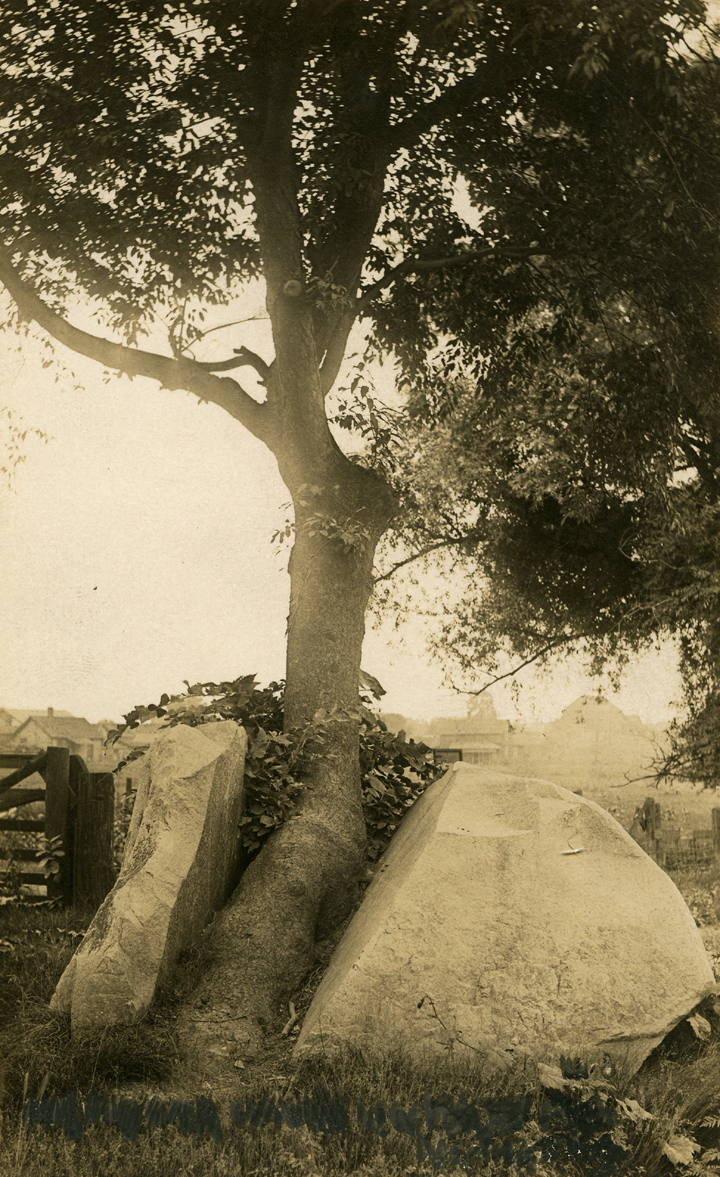Esme Berner is a 2024 graduate from James Madison College who majored in comparative cultures and politics. She was a Beal Scholar, working as a communications scholar for the Beal Botanical Garden. In this piece, Berner writes about the Campus Arboretum, which is celebrating its 150th year on campus.
I was a Beal Scholar at MSU, and it was an opportunity I will never forget. The experience of working at the Beal Botanical Garden and being fully present, whether in nature or conversation, slowed down my senior year experiences, allowing me to appreciate and value more deeply my years at MSU. Whether walking with my roommate to classes and taking note of changing trees and reliving our time here, or reflecting on the impact of 150 years of stewardship on the Campus Arboretum, the experience of working at Beal gave me an opportunity to reflect more deeply on my time at MSU.
It is hard to imagine, from where we sit in 2024, what the campus of Michigan State University might have looked like 150 years ago. In the year 1874, the university, then known as State Agricultural College, in many ways looked strikingly different. It had just admitted its first female students, and the college community traversed an unpaved Michigan Avenue via stagecoach.
What is perhaps equally thought-provoking is what remains familiar, including select buildings, street names and trees. Many trees on campus, including icons such as the Resilient Oak, are between 300 and 400 years old, predating the university itself. The MSU Campus Arboretum was first founded in 1874 and its caretakers have spent the past 150 years planting, pruning, mapping and preserving trees on campus.
Today, the Rock, a boulder gifted by the class of 1873 that’s regularly painted with messages, serves as a familiar and iconic landmark to so many of us at MSU. But the story of another seminal campus rock has been lost to time. Prior to the advent of automobiles, a large granite boulder was located just off Michigan Avenue halfway between campus and the Michigan Capitol. Dubbed “Half-Way Stone,” the rock quickly became a landmark for students and faculty traveling this route. The stone became even more illustrious when a wild cherry tree began growing out of a cleft in the boulder, earning it a second nickname: “Split Rock.” Images of the rock and tree were included in Professor William James Beal’s “History of the Michigan Agricultural College and Biographical Sketches of Trustees and Professors” in 1913.
In 1924, the rock was moved to make way for the expansion of Michigan Avenue. One half of it was placed on the Capitol lawn, and the other half was marked with a plaque and placed in front of the MSU Union, where another cherry tree was planted. The plaque includes the following poem, “Forty Years Ago,” written by Michigan Agricultural College land surveyor and poet Frank Hodgman, in 1898:
When half the toilsome way was passed, we rested by the stone
Within whose cleft a cherry pit had taken root and grown;
The cleft was not so very wide; just half an inch or so;
The little tree scarce touched its side some forty years ago.
To Hodgman, reflecting on the sprouting of the seed of the cherry tree must have seemed like an eternity ago. Could he have possibly imagined that his poem would be prominently displayed and read some 130 years on? Would the original designators of the Baker Woodlot and Rachana Rajendra Neotropical Migrant Bird Sanctuary have thought that it would someday be a designated old-growth forest? It is difficult for us in the present day to appreciate the huge amount of work that has gone into the 150-year legacy of the Campus Arboretum. Its mission statement reminds us that it is built on the years and years of stewardship and perseverance of “foresters, pathologists, entomologists, arborists and landscape designers that MSU has employed over the years.” These figures, like Hodgman, are not only stewards of plant life, but also of stories and history.

This important work continues today, and there are big plans. In 2020, the MSU Tree Management Committee implemented the Campus Tree Management Plan, which includes objectives such as promoting age and species diversity of native trees and ensuring protection of campus tree life. This not only provides a beautiful campus for all of us, but it also furthers broader MSU climate solution and sustainability goals. The Campus Arboretum has played a large role in MSU’s top 3% global ranking among universities advancing sustainability efforts, a testament to its enduring commitment to environmental stewardship. It is hard to imagine what campus will look like in another 150 years, but the work being done now to preserve and protect trees will undoubtedly be critical in continuing this legacy, which is inextricably linked to MSU’s beginnings.
When I first came to campus, I wasn’t terribly aware of the Beal Botanical Garden and Campus Arboretum, but I quickly learned that it’s a cornerstone of MSU’s many beautiful outdoor spaces with connections to research, conservation, education and history. As a stressed out senior with competing tasks and responsibilities, I began to see my time at Beal as the time within my week when I was able to be fully present. From conversations with colleagues to attending the many diverse workshops, tours and events put on by the garden, I began to feel, as Robin Wall Kimmerer says, that “paying attention is a form of reciprocity with the living world.” I eagerly looked forward to my work at Beal and to the opportunity to engage with and showcase its many meaningful programs.
Being a Beal Scholar was the most impactful experience of my senior year at MSU.
